VITREO RETINAL TREATMENT
Diabetic Retinopathy
Diabetic Retinopathy

Diabetes Mellitus
It is a condition, which impairs body’s ability to use and store sugar. Excessive thirst, hunger, weight loss, urination; elevated blood-sugar levels and changes in body’s blood vessels are all characteristics of the disease. A small organ in the body called pancreas secretes a hormone called insulin which is necessary to burn sugar. Lack of this hormone leads to known signs and symptoms of Diabetes Mellitus.
What Is Diabetic Retinopathy
Diabetic Retinopathy, a complication of diabetes, is caused by changes in the blood vessels of retina, the light sensing nerve layer at the back of the eye. These damaged blood vessels leak fluid, lipid and blood which get deposited in the retina. As a result, the images which the retina sends to the brain become blurred, distorted or partially blocked.
Diabetic Retinopathy is the leading cause of blindness among adults in our country. The risk of developing diabetic retinopathy increases with the age of diabetes. About 80% of population with diabetes of more than fifteen years, will have some damage to the blood vessels of their retina. Besides, uncontrolled diabetes, fluctuating blood sugar levels, hypertension (high blood pressure), high blood cholesterol, anemia, effect of diabetes on kidneys and pregnancy aggravate Diabetic Retinopathy.
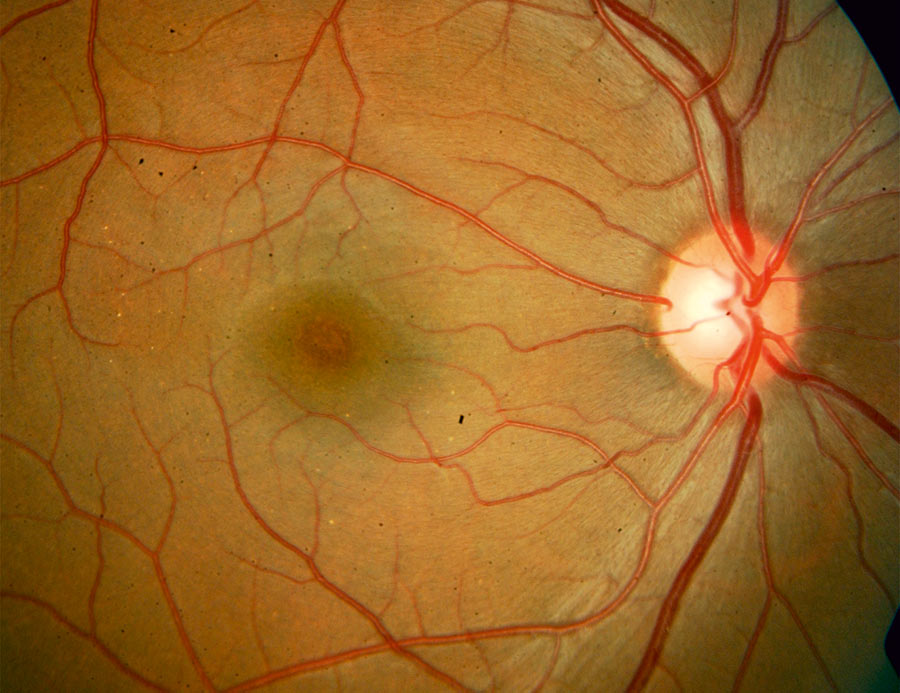
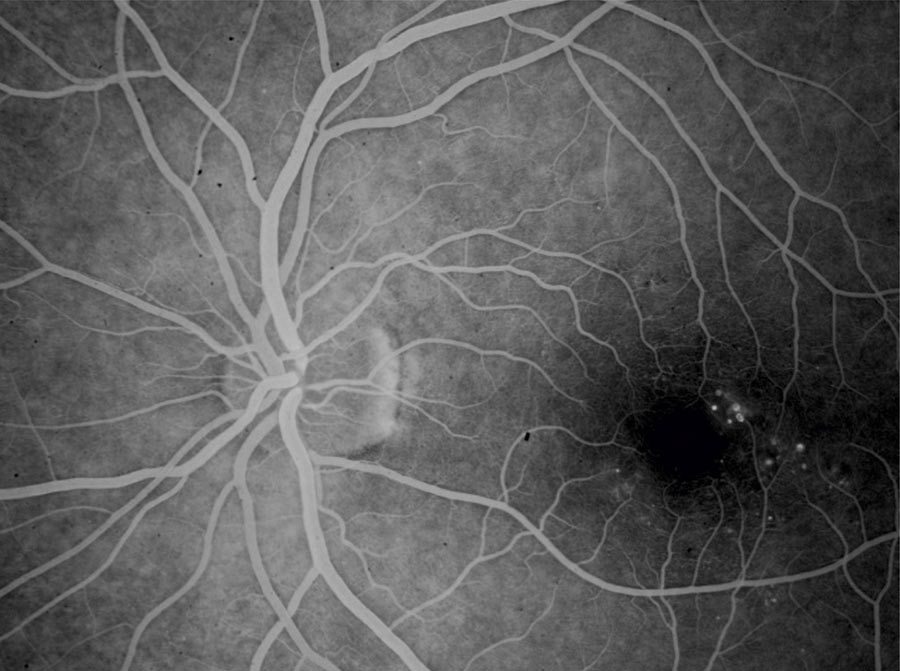
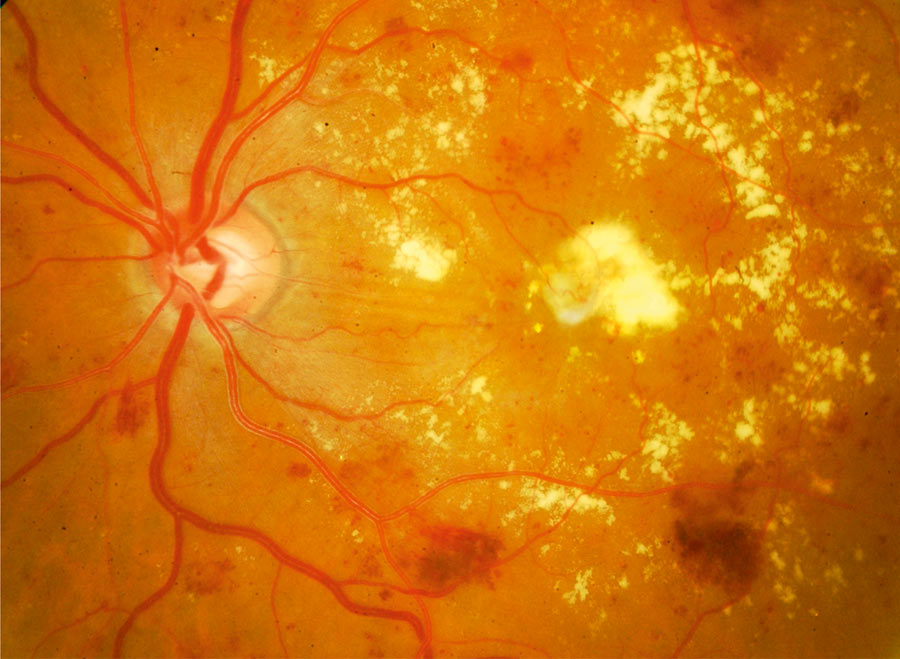
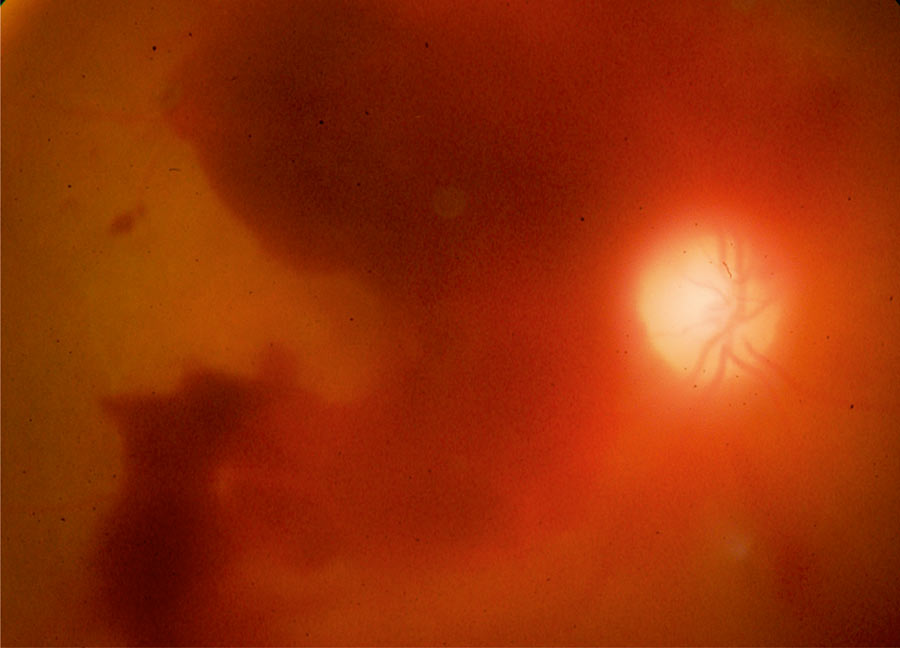

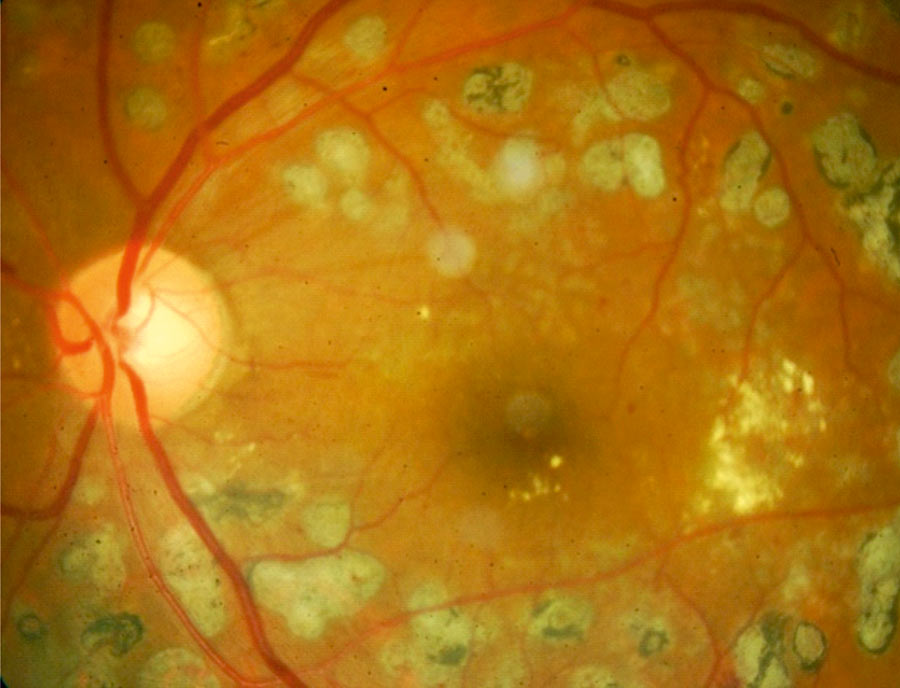
Laser Treatment: The most significant development in treatment of diabetic retinopathy is LASER. It seals or photo-coagulates the leaking blood vessels by heating effect. Laser is an acronym for Light Amplification by Stimulated Emission of Radiation. Laser does not require an incision and may be performed in the ophthalmologist’s office or an outpatient clinic. The patient sits on a chair and keeps his chin over the machine. A contact lens is placed over the eye to keep it open and to permit the surgeon to see the retina. During this procedure, a beam of laser light (green or red) is focused on the damaged retina. Small bursts of the laser beam are delivered to the diseased retina, which absorbs this energy.
Depending on the severity of the disease process, one to three or more sessions/sittings of the laser at one week intervals may be required. The laser shrinks abnormal blood vessels and prevents bleeding into the eyes.
Photo-coagulation may lead to temporary blurring of vision for some days. Laser offers no protection against development of new changes of diabetic retinopathy due to fluctuating blood sugar. Laser is not a substitute for adequate control of diabetes. It may take three to six months for laser to have full effect. If required, laser treatment can be repeated. The laser treatment prevents further loss of vision. It is therefore important to note, that the ideal time to start the treatment is when the vision is still normal.
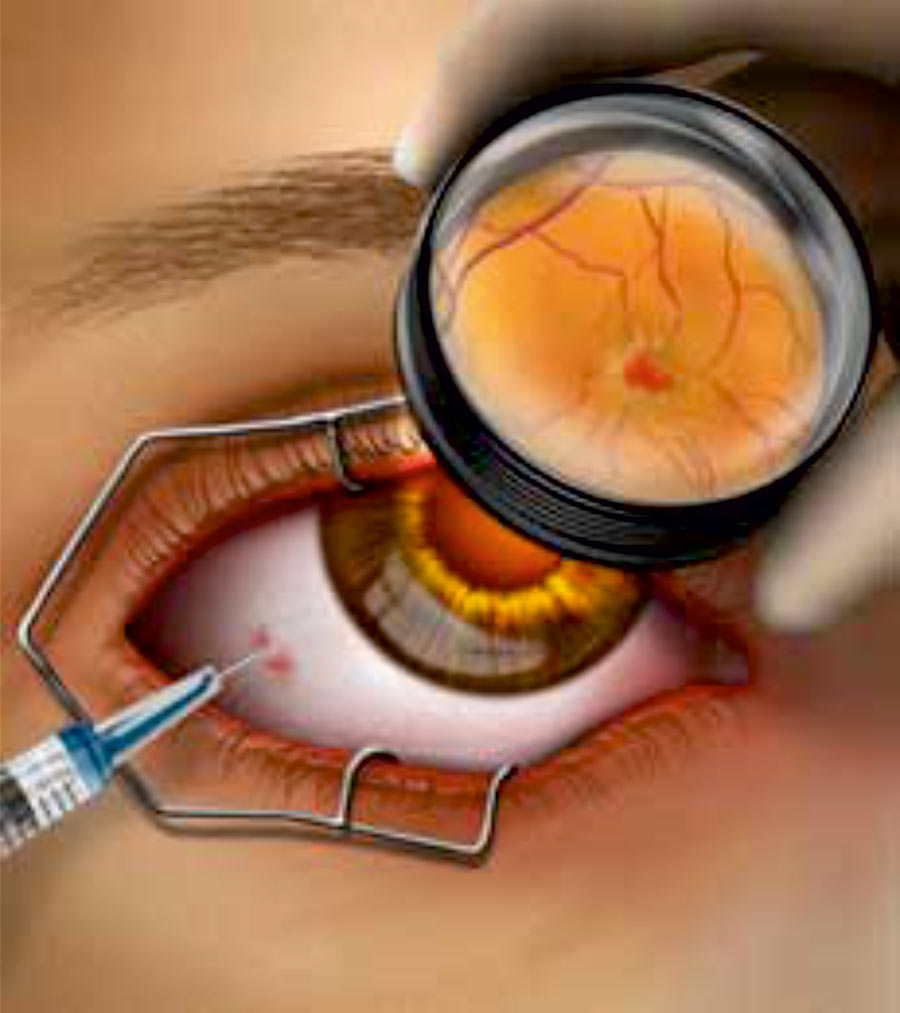
Supportive Treatment: Besides control of diabetes, management of any associated condition like hypertension, high cholesterol levels, anemia and nephropathy (effects of diabetes on kidneys) is very important to prevent aggravation of diabetic retinopathy. Steroid injections given in the outer layer of eye ball prevent leakage of fluid for 6-8 weeks. Latest advances in the treatment of diabetic retinopathy has been the introduction of anti-VEGF therapy. Bevacizumab (Avastin) is one of such drugs which is injected directly into the eyeball and has shown promising results in management of Diabetic Macular Edema and Diabetic Vitreous Hemorrhage. Lipid or cholesterol lowering drugs (Atorvastatin) also help in reducing the Diabetic Retinopathy.
Surgery: If the cavity of eye is filled by blood, the retina can not be lasered until the blood settles or clears. Procedure called Vitrectomy (PPV) is required if Vitreous Hemorrhage persists. Vitrectomy is a microsurgical procedure, performed in the operating room, to remove the blood. This is a sophisticated procedure performed by trained surgeons.
Diabetic Retinopathy is the leading cause of blindness among adults in our country. The risk of developing diabetic retinopathy increases with the age of diabetes. About 80% of population with diabetes of more than fifteen years, will have some damage to the blood vessels of their retina. Besides, uncontrolled diabetes, fluctuating blood sugar levels, hypertension (high blood pressure), high blood cholesterol, anemia, effect of diabetes on kidneys and pregnancy aggravate Diabetic Retinopathy.

Normal Retina

CSME

Type 1, NPDR

Type 2, PDR
Types of Diabetic Retinopathy
- Nonproliferative Diabetic Retinopathy (NPDR): This is an early stage of diabetic retinopathy. Fine blood vessels leak fluid and lipids causing the retina to form deposits called exudates. This problem is called Diabetic Macular Edema. Sight can be restored if treated in time. If left untreated, macular edema can worsen and vision is lost. Reading and close work may become more difficult: In some diabetic patients, vision may be permanently impaired due to reduced blood supply to the central part of retina - a condition called macular ischemia.
- Proliferative Diabetic Retinopathy (PDR): Proliferative Diabetic Retinopathy is the advanced stage and more serious form of diabetic retinal disease. It affects up to 20% of diabetics and can cause severe loss of sight, including blindness. Abnormal blood vessels begin to grow on the surface of the retina or the optic nerve. These new blood vessels, called neo-vascularisation, have weaker walls and may rupture and bleed into vitreous, the clear gel like substance that fills the cavity of the eye. This leaking blood blocks the light, causing severe impairment of vision. These abnormal blood vessels frequently grow scar like tissue with them which may pull the retina away from its normal position at the back of the eye (retinal detachment).
Diabetic Retinopathy is a painless condition. One can have Non-proliferative Diabetic Retinopathy for a long time without any symptoms. Thus changes in the eye can go un-noticed unless detected by an eye examination. Gradual painless blurring of vision suggests onset of diabetic retinopathy. A sudden loss of vision points to bleeding inside the eye due to proliferative diabetic retinopathy. This severe form of diabetic retinopathy requires immediate medical attention or surgery.

Treatment of Diabetic Retinopathy

Laser Treatment: The most significant development in treatment of diabetic retinopathy is LASER. It seals or photo-coagulates the leaking blood vessels by heating effect. Laser is an acronym for Light Amplification by Stimulated Emission of Radiation. Laser does not require an incision and may be performed in the ophthalmologist’s office or an outpatient clinic. The patient sits on a chair and keeps his chin over the machine. A contact lens is placed over the eye to keep it open and to permit the surgeon to see the retina. During this procedure, a beam of laser light (green or red) is focused on the damaged retina. Small bursts of the laser beam are delivered to the diseased retina, which absorbs this energy.
Depending on the severity of the disease process, one to three or more sessions/sittings of the laser at one week intervals may be required. The laser shrinks abnormal blood vessels and prevents bleeding into the eyes.
Photo-coagulation may lead to temporary blurring of vision for some days. Laser offers no protection against development of new changes of diabetic retinopathy due to fluctuating blood sugar. Laser is not a substitute for adequate control of diabetes. It may take three to six months for laser to have full effect. If required, laser treatment can be repeated. The laser treatment prevents further loss of vision. It is therefore important to note, that the ideal time to start the treatment is when the vision is still normal.

Supportive Treatment: Besides control of diabetes, management of any associated condition like hypertension, high cholesterol levels, anemia and nephropathy (effects of diabetes on kidneys) is very important to prevent aggravation of diabetic retinopathy. Steroid injections given in the outer layer of eye ball prevent leakage of fluid for 6-8 weeks. Latest advances in the treatment of diabetic retinopathy has been the introduction of anti-VEGF therapy. Bevacizumab (Avastin) is one of such drugs which is injected directly into the eyeball and has shown promising results in management of Diabetic Macular Edema and Diabetic Vitreous Hemorrhage. Lipid or cholesterol lowering drugs (Atorvastatin) also help in reducing the Diabetic Retinopathy.
Surgery: If the cavity of eye is filled by blood, the retina can not be lasered until the blood settles or clears. Procedure called Vitrectomy (PPV) is required if Vitreous Hemorrhage persists. Vitrectomy is a microsurgical procedure, performed in the operating room, to remove the blood. This is a sophisticated procedure performed by trained surgeons.
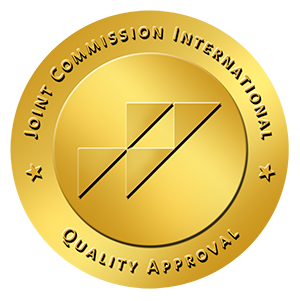
International Quality Accreditated by
Joint Commission International, USA (JCI)
Online Appointment
Book Online Appointment and Save 10% on Online Payment.
